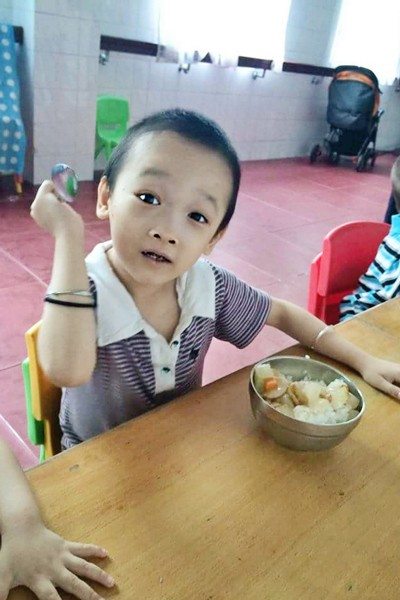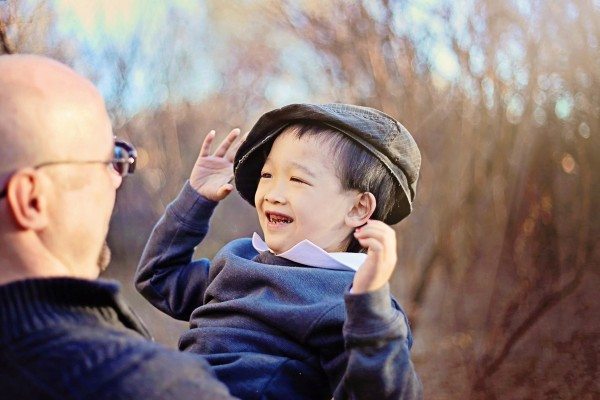“It’s so easy to live with! It barely impacts our day to day life.”
“It’s a very complicated disease. It looks like it’s going to be another couple of weeks in the hospital this time…”
You might think I’m referring to different disorders in the descriptions above. The truth is these were all things I heard when we adopted our son, Finn, who suffers from a rare genetic disorder called Beta Thalassemia Major. I heard the first few statements from other parents in the thalassemia community, whose thal warriors were already home. I heard the last couple from the doctor who treats Finn.
In reality, thalassemia is an extremely predictable and treatable disease. For kids who come home early, it often operates as little more than an annoyance…. they take a pill every night and have to take a break from their normal routine every few weeks to get some blood. The parents I spoke to were right. But, so was the pediatric hematologist.
So what’s the difference between my child and those other kids doing wonderfully under watchful American medical care?
About four or five years.
Thalassemia is an inherited genetic disorder that involves deletion of the genes that create hemoglobin. Most people have eight hemoglobin genes, four alpha and four beta. Finn has three alpha, and no beta at all. Children with this disorder create hemoglobin that is unable to carry oxygen. They require regular blood transfusions, followed by chelation therapy to pull the excess iron that is a byproduct of transfusions from their body.
Chinese hospitals typically offer half-hearted care for these kids, giving only minimal transfusions when the child is too sick to function, and usually no chelation at all. In reality, unless their care is completely ignored, it’s not the profound anemia that will kill them, but the buildup of iron from the transfusions. Children who are young, who haven’t had time for the breakdown of body systems that inevitably come with subpar treatment, do very well when they come home. This constitutes the bulk of kids who come home from China.
Then we have Finn….

When we discovered Finn waiting in China, we were new to international adoption, completely ignorant of thalassemia, and worried about the medical expedite process when we knew nothing about adoption at all, let alone speeding it up. At that time, no profoundly sick children with thalassemia had ever come home. China’s practice was once to not allow thalassemia adoptions at all, and by 2014, the majority of children who were adopted with thal were young children….little ones who hadn’t yet had time to suffer for years in silence.
We learned of Finn through desperate advocacy for this child who had reached the end stages of what Chinese medicine could do for thalassemia. We had no clue what we were doing, what we in for, or if he would even survive.
We said yes, anyway.
In China, thalassemia is a terminal pediatric disorder. Death is considered inevitable. The fight given for these children is usually minimal. Then, at a point, the orphanage steps back… and allows ‘nature take its course’. The other day I read that the bulk of people with thalassemia still in China, both in and out of an institutional setting, are dead by the age of five. Five. Years. Old. Wrap your brain around that tragedy. Currently, the average age of death for Americans with thalassemia is fifty years old. That’s people who went a lifetime without the benefit of the rather recent gift of chelation. The enormity between our care here and the care given in China is quite considerable!
The months following our “yes” were a wild roller coaster of emotions as Finn was in and out of the hospital constantly, halfway around the world from our family and the care we knew he critically needed. At one point during our wild ride, we were informed Finn had been deemed too sick to adopt and his file was going to be pulled. Many days of trauma and deep soulful praying followed as our case was pleaded to continue our adoption. Finally we were told his adoption could continue. However, the orphanage had no more ideas for his care. They would attempt to keep him alive until we got there, but no promises could be made. He did survive until we arrived, but the battle was just beginning.
When we picked him up, Finn’s file said he was six years old. He was smaller than our petite four year old bio daughter. His teeth were completely rotted out of his mouth, only tiny black stubs remaining in most spots. His skin was ghostly white, with a grayish green tint beneath. There were enormous black sacks underneath both of his red rimmed eyes, and his stomach was the size of a basketball from multiple enlarged organs. To our surprise, despite his appearance he seemed to be feeling okay. In fact, he had a lot of energy! Because of all the dire updates on his condition, we’d pictured stepping off the plane and straight into the double doors of the hospital. Once at home, he seemed to be doing well enough to give him a few days to settle in before his appointment to see the hematologist.
His appearance was much closer to the truth than his energetic behavior was. The first day we saw the hematologist we were immediately admitted to the hospital. Finn’s liver and spleen were grossly enlarged. His heart was suffering from regurgitation and a heart murmur, both caused by cardiac iron overload. His hemoglobin was high because he’d been systematically over-transfused for the weeks before his adoption in hopes of keeping him well until we arrived. He was also in a state of extremely profound anemia. He was admitted to the hospital where it took weeks to get everything figured out. He spent nights getting high levels of IV chelation, and days trying to address his multiple medical issues resulting from other gaps in his care. Multiple surgeries were required. Hidden throughout the intensely infected rows of rotted baby teeth, Finn already had twelve adult teeth.
No one had to tell us what that meant, though they did in the gentlest way possible. Despite being too thin and too short to wear the size four clothing we’d purchased him, it was almost guaranteed that Finn was not six years old and more like nine to twelve years old. Those years of poor care had taken their toll. He truly was on the brink of death. Even once his cardiac iron had lowered enough that he was allowed to leave the hospital, the following months were touch and go. He was admitted again and again. He could not sustain his hemoglobin levels, even after transfusions. No one knew if he’d be able to hold on to his spleen, or if it would have to be removed. Since his iron levels in his liver were more than twice than what they should have been, his doctors feared cirrhosis. His life was nothing but constant appointments. The good care he was getting seemed to offer very little in allowing him to recover from the damage already done.
Then at about the one year mark, his spleen and liver started shrinking, the iron levels started lowering, the hemoglobin levels started miraculously maintaining for more than a week or two. Suddenly all this proper care was finally regulating his body.
And now, at a year and a half home, Finn is doing amazingly better. His lifespan has likely been shortened by the damage already done, but who knows what the future of medicine will bring. He’s extremely healthy considering what he’s been through. His iron levels are still astronomical, but we’re always working to find ways to bring it down. His spleen is nearly within normal size ranges. His liver is normal sized. He no longer has even a heart murmur. His skin is no longer sallow and his eyes are no longer sunken. He has a mouth full of healthy teeth, and he only requires a transfusion once a month. The battle to undo damage that years of waiting brought is still uphill, but the changes we have seen make every moment and every dollar spent so well worth it.

If Finn had been given this medical care early on, he would have been one of the kids who barely notice their thalassemia in their everyday course of living. The ones whose parents find it easy to manage their care. It’s so very important to get these kids home. There are now many children with thalassemia available for adoption. Not as many as you may find with other diagnoses, because thalassemia is rather rare, but they are out there, waiting for families like yours. If these little ladies and fellows find families now, they won’t need to spend years struggling….they will have the advantage of receiving good care that older children never get in China.
In addition to young children who need homes now before they become like Finn, there are also many older boys currently listed who have managed to hang on to life. Boys that are nine to twelve, like Finn, boys who are so worth every moment and every dollar, just like Finn. Boys who need to be rescued in a very real way.
If you have it in you to fight possibly the hardest fight you’ve ever faced, consider an older child with thalassemia… nothing will ever be more rewarding. If you aren’t up to that particular challenge, please, please consider a young child suffering from thalassemia. Consider giving them the chance that Finn was never given….to grow up healthy right from the start.
Advocate for thalassemia kids with friends and family. You never know….one of these kids may just be the “missing piece” for a family. And their lives? They literally depend on advocacy! Help be the “life’s blood” for one of these precious kids. You will never be sorry.

























Great post, Amber. You and Mike are amazing, stubborn people whose will to fight is reaping dividends, both now and to eternity.
You’ve got a little girl who’s about to reap the benefit of that stubbornness we share, Crystal. It’s essential to raise these kids, and we learn it so well while getting them home lol